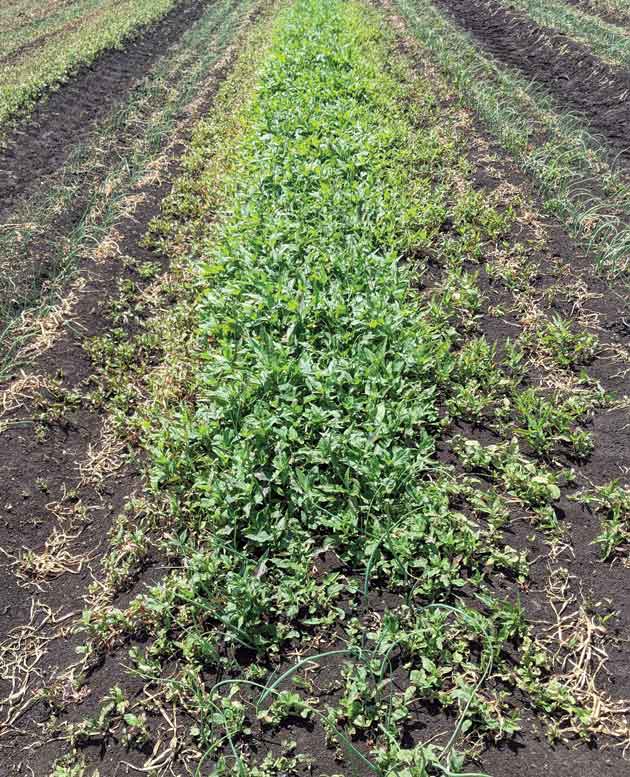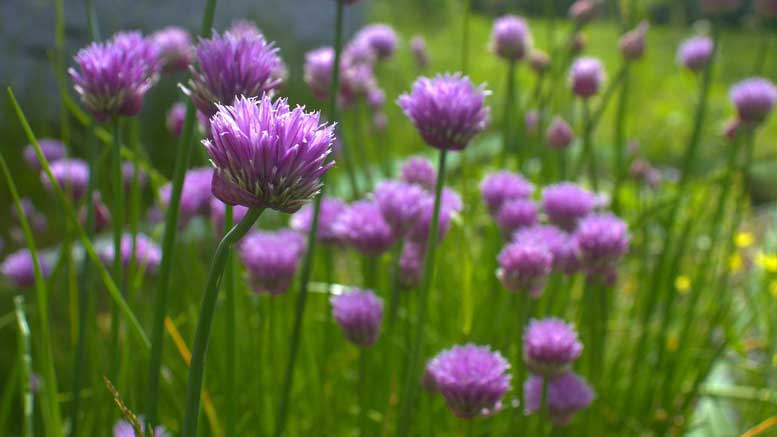|
Click to listen to this article
|
By Sushila Chaudhari, Assistant Professor, Michigan State University
Weed management is a very critical and important aspect for production of good quality and yield of an onion crop. Adequate management of weeds in onions is particularly important early in crop growth when weeds compete with the crop for moisture, nutrients, light and space. Onions have a shallow, non-aggressive, fibrous root system, and weed competition early in the growing season can significantly reduce yield. Weeds can also interfere with chemical sprays and harvest operations and exacerbate the environmental conditions favorable for foliar disease development by decreasing air movement within the canopy.
Weed control in onion fields starts in the fall after harvest of rotational crops and is mainly achieved through a combination of chemical, cultural and mechanical weed control strategies. After crop harvest in the fall, pay close attention to the weed species present in your field. If there are many perennial weeds, then it is the best time to apply glyphosate. Cultivation can be effective for annual weeds, but it is not appropriate for perennial weeds due to their vegetative re-rooting following disturbance. Planting cover crops in the fall is also a good strategy to manage winter weeds.
Early-Season Recommendations
Onions are very sensitive to weed competition during the first few weeks of growth. Therefore, preventing new weed germination and killing emerged weeds in the cotyledon stage is critical to achieve successful weed management throughout the growing season.
Herbicides always play an important role for weed management in onions. The label allows three applications at pre-emergence, two-leaf stage, and six- to nine-leaf stage of 2 quarts (1.9 lb active ingredient (ai)/acre) of Prowl H2O (6 lb ai/acre/year) on onions. Under normal conditions, the last application should go on in early to mid-July given the 45-day pre-harvest interval (PHI), assuming harvest is around the first week of September.
A delayed pre-emergence application (10 to 20 days after seeding, before onion emergence) allows many weeds to emerge, which are then killed with bromoxynil, which is added to the pendimethalin (Prowl H2O). The primary weeds early in the season are ladysthumb, common purslane and redroot pigweed. The delayed pre-emergence pendimethalin plus bromoxynil should be applied just before onions emerge. Emerged onion plants may be killed by bromoxynil. A few loops emerged from the soil surface is the latest safe stage to apply this treatment.


In Michigan, GoalTender (oxyfluorfen) at 2-6 fluid ounces per acre (0.063-0.188 lb ai) may be applied to onions at the one-leaf stage and later until 45 days before harvest. Growers may have to sacrifice a few onion plants to follow a herbicide plan of applying GoalTender at the onion one-leaf stage, followed by another pre application and GoalTender at the two-leaf stage. Onions can lose 10 percent of the intended stand without decreasing yield by producing bigger bulbs. Without good weed control, yield reduction can be much greater than 10 percent, so it normally is most effective to kill the weeds early and completely. If common lambsquarters and ladysthumb are not killed in the cotyledon to one-leaf stage, they may survive all season. High rates of GoalTender (5-6 fluid ounces) can injure soft onion leaves, especially in wet, cool years.
Season-Long Management
Dual Magnum (S-metolachlor) and Outlook (dimethenamid-P) may be applied with Prowl H2O, or alone after the two-leaf stage. Both have good yellow nutsedge activity. Dual Magnum may be applied twice and has a 60-day PHI. One application of Outlook is allowed with a 30-day PHI, so Outlook normally would be the last pre-emergence application of the season. All of these herbicides tend to be weak on common ragweed and mustards. Another pre-emergence herbicide Zidua (pyroxasulfone) may be applied at 2 to 2.75 fl oz/ac (0.065 to 0.09 lb ai/ac) to onions at the two- to six-leaf stage.
Chateau (flumioxazin) is registered for up to three applications and a total of 3 ounces of product per acre per year. It may be applied with Prowl H2O, but not with Dual Magnum or Outlook because their solvents make Chateau more toxic to onion. Adding Chateau at 1-2 ounces per acre to the two applications of Prowl H2O to emerged onions will improve pre-emergence control of mustards (shepherd’s purse, marsh yellowcress, Virginia pepperweed), smartweeds (ladysthumb, Pennsylvania smartweed, prostrate knotweed) and composites (common ragweed, common groundsel, pineapple weed). Chateau also has some pre-emergence and post-emergence activity on spotted spurge.
Grasses can be controlled with Fusilade (fluzifop-P), Poast (sethoxydim) or Select Max (clethodim). The most critical early grass problem in onion is cover crop barley, which may grow too tall. This often happens when heavy rains prevent timely herbicide applications. Barley should be planted at 0.75-1 bushel/acre and killed when it is 4-5 inches tall. It can grow past that stage rapidly during cool, wet conditions and adversely affect small onions, often causing stand and yield loss.
Detailed information related to the herbicide rates and efficacy on weeds can be obtained from labels and Michigan State University Extension bulletin E-433, “Weed Control Guide for Vegetable Crops,” that contains lists of all currently labeled herbicides along with specific remarks for their use in onion.

